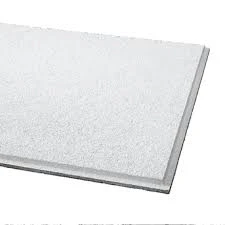- Afrikaans
- Albanian
- Amharic
- Arabic
- Armenian
- Azerbaijani
- Basque
- Belarusian
- Bengali
- Bosnian
- Bulgarian
- Catalan
- Cebuano
- Corsican
- Croatian
- Czech
- Danish
- Dutch
- English
- Esperanto
- Estonian
- French
- German
- Greek
- Hindi
- Indonesian
- irish
- Italian
- Japanese
- Korean
- Lao
- Malay
- Myanmar
- Norwegian
- Norwegian
- Polish
- Portuguese
- Romanian
- Russian
- Serbian
- Spanish
- Swedish
- Thai
- Turkish
- Ukrainian
- Uzbek
- Vietnamese
нов . 06, 2024 18:21 Back to list
Installation Guide for Suspended Drywall Ceiling Grid Systems and Best Practices
Understanding Suspended Drywall Ceiling Grid Systems
Suspended drywall ceiling grids represent a significant advancement in modern interior construction, combining aesthetics with functionality. These systems have become popular in commercial and residential projects due to their versatility, ease of installation, and ability to provide a clean and professional finish. In this article, we will explore the components, benefits, installation procedures, and design considerations associated with suspended drywall ceiling grids.
Components of Suspended Ceiling Grid Systems
A suspended drywall ceiling grid system mainly consists of metal framework components that support drywall panels or other ceiling materials. The core elements include
1. Main Tees These are the primary horizontal supports installed across the ceiling, typically spaced 4 feet apart. 2. Cross Tees Smaller sections that are inserted perpendicular to the main tees to create a grid pattern that supports the drywall. 3. Wall Angles These L-shaped pieces are installed along the perimeter of the room to provide a anchor point for the ceiling grid. 4. Hangers These support wires or rods suspend the grid system from the structural ceiling above, allowing for adjustments and leveling. 5. Drywall Panels The final aesthetic covering that is fitted into the grid system, providing a smooth ceiling surface.
Benefits of Suspended Ceiling Grid Systems
Suspended drywall ceiling grids offer numerous benefits that make them a preferred choice in various construction environments
1. Aesthetic Appeal One of the primary reasons to choose a suspended ceiling grid is its ability to enhance the overall appearance of a room. The smooth surface of the drywall can be painted in any color, allowing for limitless design possibilities. 2. Concealment of Utilities Suspended ceilings effectively hide HVAC ducts, electrical wiring, and plumbing lines, promoting a clean and organized look in commercial and residential spaces.
3. Sound Absorption Many drywall ceiling panels can be designed to absorb sound, which is particularly useful in offices and other environments where noise control is essential.
4. Easy Access The grid system allows for easy access to the utilities hidden above the ceiling. If maintenance or upgrades are necessary, panels can be removed and replaced without damaging the entire ceiling.
5. Flexibility Suspended ceiling grids can be adjusted to accommodate changes in interior design. Whether you want to add lighting fixtures or change the layout, the system can be modified to suit new requirements.
suspended drywall ceiling grid

Installation Process
Installing a suspended drywall ceiling grid requires precision and attention to detail. Here is a simplified overview of the procedure
1. Planning and Measurement Before installation, it’s essential to measure the space and plan the layout of the grid. This includes determining the height of the ceiling and the spacing of the main and cross tees.
2. Securing Wall Angles Attach the wall angles along the perimeter of the room at the desired height. Ensure they are level, as this will dictate the height of the entire ceiling grid.
3. Installing Main Tees Use hangers to suspend the main tees from the structural ceiling above, making sure they are parallel and evenly spaced.
4. Adding Cross Tees Insert cross tees into the main tees, creating a grid. Standard spacing is typically two feet, depending on the intended drywall panel size.
5. Mounting Drywall Panels Once the grid is complete, cut and attach drywall panels to the grid framework. Ensure that the panels are secured, and all joints are properly finished for a seamless appearance.
Design Considerations
When designing a space with a suspended drywall ceiling grid, consider factors such as ceiling height, room function, and lighting requirements. Additionally, consult local building codes to ensure compliance with any regulations affecting ceiling installations.
Conclusion
Suspended drywall ceiling grids offer an efficient, aesthetically pleasing solution for modern interior environments. Their ease of installation, coupled with the ability to conceal utilities and improve acoustic performance, makes them a favored choice among architects, designers, and builders alike. Whether you are renovating an old space or constructing a new one, consider the benefits of a suspended drywall ceiling grid to achieve a polished and professional finish.
-
Transform Interiors with PVC Gypsum Ceiling: A Stylish, Durable, and Moisture-Resistant SolutionNewsMay.19,2025
-
The Smart Interior Upgrade: Discover the Durability and Versatility of Gypsum Ceiling Access Panel SolutionsNewsMay.19,2025
-
The Smart Choice for Interior Design: Discover the Value of PVC Gypsum Ceiling SolutionsNewsMay.19,2025
-
Mineral Fiber Ceiling Tiles: The Smart Blend of Performance and AestheticsNewsMay.19,2025
-
Mineral Fiber Ceiling Tiles: The Superior Choice Over Gypsum for Sound and Fire SafetyNewsMay.19,2025
-
Mineral Fiber Ceiling Tiles: Eco-Friendly Strength and Style for Every CeilingNewsMay.19,2025







